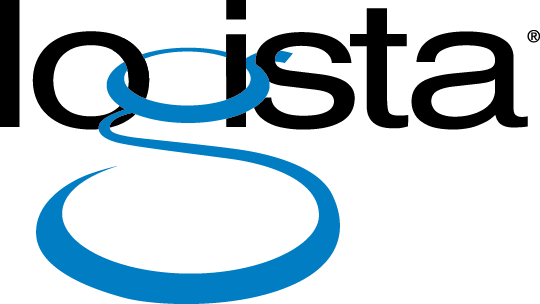The IT skills gap has been growing for years, and many businesses are feeling the pressure more than ever. Teams are stretched thin. Technology is advancing faster than most internal departments can keep up with. Cybersecurity requirements continue to rise. New tools and cloud-based services appear every month. All of this creates a widening gap between what businesses need and what their internal teams can realistically support.
The problem is easy to recognize but difficult to solve. According to Skillsoft, seventy-five percent of IT decision-makers have identified skill gaps within their IT staff. That number reflects a challenge seen across nearly every industry. Businesses depend on technology for daily operations, yet many struggle to find or retain the specialized talent required to support it.

Co-Managed IT has emerged as a practical way to close this gap. Instead of replacing the internal team, Co-Managed IT strengthens it. The model brings in outside expertise, extra capacity, and modern tools while allowing the internal team to stay in control. It is a partnership that gives businesses the flexibility they need in a constantly changing environment.
This blog takes a closer look at the rising IT skills gap, why it continues to grow, and how Co-Managed IT offers a sustainable path forward for businesses of all sizes.
Understanding the IT Skills Gap
The IT skills gap is the difference between the technical skills a business needs and the skills the internal IT staff currently possess. This gap does not reflect a lack of effort or talent. Most IT teams work incredibly hard and carry a heavy workload. The issue is that the demand for advanced skills is rising faster than internal teams can train, hire, or adapt.
Several factors contribute to this widening gap.
One major factor is the rapid growth of cybersecurity needs. Threats evolve constantly. New types of attacks appear every year. Many organizations do not have the time or resources to keep up with best practices, threat detection, or security frameworks. Cybersecurity is now a full-time discipline with its own certifications and specialties. Expecting a small internal team to cover it fully can be unrealistic.
Cloud adoption is another key driver. Even businesses that once relied entirely on local servers now use cloud platforms for storage, applications, backups, or collaboration. These environments require different skills. Managing identity, permissions, hybrid networking, or cloud security is often outside the comfort zone of teams that traditionally focused on hardware and local systems.

Recruiting challenges also play a major role. Skilled IT professionals are in high demand, and the competition for talent is intense. It takes time and money to hire experienced specialists, and many organizations cannot justify a full-time position for certain expertise. When companies do find the right person, they may still face retention challenges because larger organizations often offer higher salaries or more attractive career paths.
The result is slower progress on projects, limited cybersecurity maturity, and constant strain on the internal team. Burnout becomes common. Routine tasks get delayed. Strategic work is pushed aside in favor of day-to-day emergencies. The overall business ends up feeling the impact.
What Co-Managed IT Means for Your Business
Co-Managed IT is a partnership model that blends the internal IT staff with the expertise of a Managed IT Services provider. It is not a replacement for your current team. Instead, it strengthens and supports them. The internal team keeps control while the provider fills gaps in skills, coverage, or capacity.
This model is flexible. The provider can help with specific services, major projects, cybersecurity needs, routine monitoring, or anything the internal team does not have time or resources to handle. Businesses can scale the support up or down as needs change. This makes Co-Managed IT ideal for organizations that want to support their team without committing to multiple full-time hires.
Co-Managed IT also differs from fully outsourced IT. In a fully outsourced model, the provider takes over everything. Decisions, planning, and day-to-day tasks are handled externally. Co-Managed IT works differently. The internal team stays involved in every major decision. They collaborate with the provider and remain in control of the environment. The provider simply offers the expertise and tools needed to keep the business running smoothly.
Many businesses choose Co-Managed IT because the complexity of modern technology makes it difficult for even strong internal teams to cover every area. Co-Managed IT fills the gaps without taking away autonomy.
How Co-Managed IT Helps Close the IT Skills Gap
Co-Managed IT helps businesses close the skills gap in several ways. The model offers a blend of expertise, flexibility, and shared responsibility that directly strengthens the internal team.
Access to Specialized Skills on Demand
Managed IT Services providers employ specialists in many areas. These include cloud solutions, cybersecurity, compliance, networking, automation, and more. Most businesses cannot afford to hire full-time experts for every discipline. Co-Managed IT gives businesses access to this expertise whenever needed.
This support prevents issues that would otherwise require outside consultants or costly emergency services. It also provides confidence that advanced help is available without long delays.
Better Coverage for Ongoing IT Needs
Many internal IT teams spend a large part of their day responding to support requests, troubleshooting user issues, or managing routine updates. These tasks are important but often leave little time for long-term planning or strategic projects.
Co-Managed IT can take on many of these time-consuming responsibilities. These providers can monitor systems twenty-four hours a day, handle patching, respond to alerts, or manage help desk tickets. This gives the internal team more time to focus on high-value work.
Support for Long-Term Projects
Businesses often delay system upgrades, cloud migrations, or major technology improvements because the internal team does not have enough time to plan and execute them. These delays can create vulnerabilities and prevent the organization from taking advantage of new tools.
A Co-Managed partner can assist with large projects. They can provide skilled professionals who understand best practices and can complete projects more efficiently. This ensures that important work is completed instead of waiting for months or even years.

Stronger Cybersecurity
Cybersecurity requires constant attention. It involves threat monitoring, patching, vulnerability scanning, data protection, and compliance. Most small and midsized businesses struggle to keep up because these responsibilities require specialized knowledge and continuous training.
A Co-Managed partner brings a full suite of security tools, along with the expertise needed to use them effectively. They understand the current threat landscape and can help build a stronger security foundation. This adds significant protection and reduces the risks associated with gaps in skills or staffing.
Ongoing Training and Knowledge Sharing
Co-Managed IT is about collaboration. Many providers work side by side with internal teams. This creates natural knowledge sharing. Internal staff gain exposure to best practices and new methods. Over time, the internal team grows stronger.
This benefit is often overlooked, yet it is one of the most valuable advantages of the Co-Managed model.
Improved Workload Balance
IT departments are under constant pressure. When the workload becomes overwhelming, mistakes happen. Staff morale drops. Projects slow down. A Co-Managed partnership helps balance the workload so the internal team can breathe. They gain the freedom to focus on strategic work instead of only reacting to issues.
This leads to better retention and a more positive work environment. It also reduces the risk of burnout, which is a growing challenge in many IT departments.
What Co-Managed IT Looks Like in Practice
A Co-Managed partnership looks different for every organization because each business has its own strengths and gaps. In many cases, the provider handles monitoring, system updates, cybersecurity, after-hours support, backups, documentation, or help desk services. The internal team handles tasks that require on-site presence, company-specific support, hardware replacements, and direct user relationships.
Some businesses use Co-Managed IT for temporary support during busy seasons or major projects. Others use it for ongoing shared responsibility. The model is flexible and can be adjusted based on growth, staffing changes, or new technology requirements.
Signs That Your Organization Has a Skills Gap
It is not always easy to see the skills gap from the inside. Many IT teams work so hard to keep up that they do not have time to step back and evaluate the situation. Here are common signs that indicate a need for Co-Managed support.
- Strategic technology projects are being delayed or pushed aside.
- IT staff consistently work beyond normal hours because the workload is too heavy.
- Security measures are inconsistent or incomplete.
- There is difficulty filling open IT positions.
- Recurring technical problems do not get fully resolved.
- Systems are outdated because the team does not have time to manage upgrades.
- Compliance requirements are becoming harder to maintain.
These signs suggest that the internal team may need additional support to keep the business safe, stable, and productive.
The Business Benefits of Closing the Skills Gap with Co-Managed IT
Closing the skills gap delivers benefits across the entire organization. A stronger IT foundation leads to better productivity, greater resilience, and a clearer path for growth.
- Projects move faster when skilled support is available. The organization can adopt new tools, modernize systems, and improve efficiency without long delays.
- Stronger cybersecurity reduces the chance of downtime, data loss, and costly recovery efforts. Threats are identified earlier, and responses happen more quickly.
- Employees across the company benefit from quicker support and fewer disruptions. This builds confidence in the IT department and strengthens the overall work environment.
- Most importantly, the internal IT team becomes more effective. They gain breathing room. They have opportunities to develop their skills. They feel supported instead of overwhelmed. This creates a healthier, more stable team for the long term.
From a financial standpoint, Co-Managed IT is often more affordable than hiring multiple specialists. It provides predictable monthly costs and avoids the heavy expense of recruitment and turnover.

How to Choose the Right Partner
Selecting the right partner is important. Look for a provider with experience working alongside internal teams rather than replacing them. Co-management requires collaboration, shared visibility, and respect for the internal team’s knowledge and responsibilities.
Review the provider’s range of expertise. They should offer proven skill sets in cybersecurity, networking, cloud environments, compliance, strategic planning, and day-to-day support.
Ask about their monitoring tools, documentation standards, and reporting processes. Your internal IT team and the provider’s team should share the same information, so everyone is working from a single, accurate source. This level of transparency builds trust and improves collaboration.
A good Co-Managed partner will offer flexibility. They will tailor the relationship to match your team’s strengths and fill only the gaps that matter. They will also support knowledge transfer rather than keeping information to themselves.
A Practical Path Forward
The IT skills gap is a challenge that many businesses are already dealing with in their day-to-day operations. Workloads grow, technology evolves, and internal teams are expected to keep pace with limited time and resources. Hiring and training help, but they rarely address every need, especially when the pace of change is this fast.
Co-Managed IT offers a practical way to strengthen the team you already have. It brings in specialized knowledge when needed, supports long-term projects, improves security coverage, and gives internal staff room to focus on the work that matters most. The goal is not to replace your team but to help them operate with more confidence, capacity, and clarity.
For many organizations, the next step is simply taking an honest look at what their IT team is responsible for and identifying where the pressure points are. Once those gaps are clear, a Co-Managed partnership can help provide the support that keeps the business moving forward.
About Logista Solutions
Logista Solutions is a nationally recognized leader in a broad range of technology management solutions. As one of the largest technology support providers in the U.S., Logista provides innovative and holistic solutions to help companies take control of their IT infrastructure and achieve better business outcomes. Popular services include Managed IT as a Service, VoIP and Unified Communications, Managed Print, Cloud Services and Asset Disposition.



